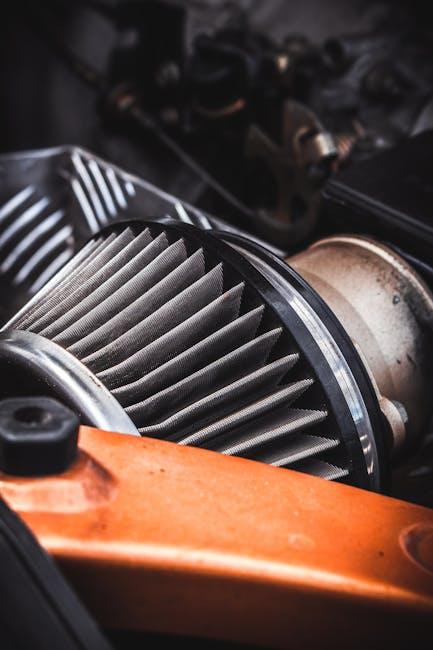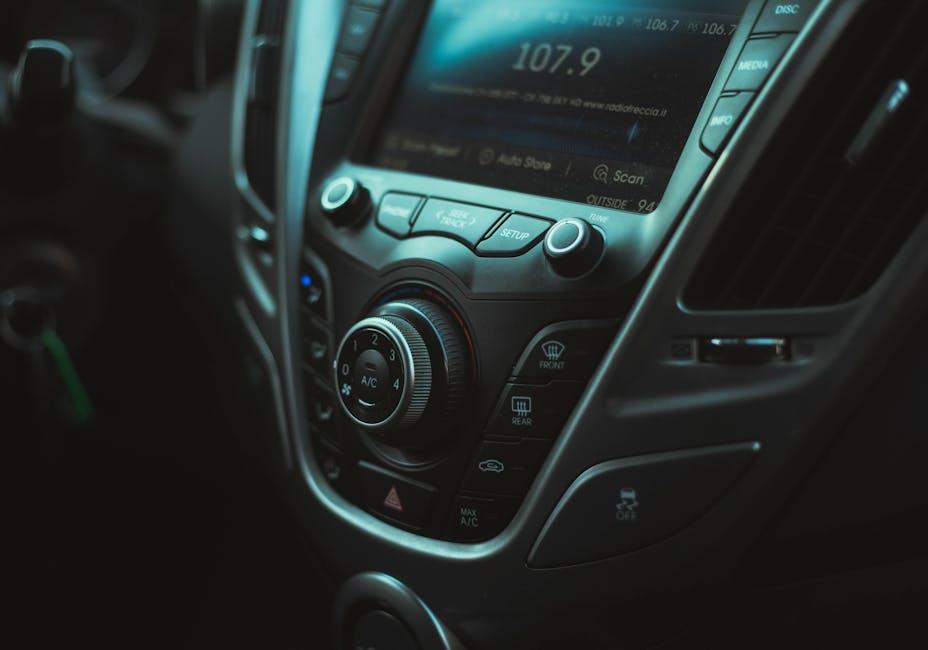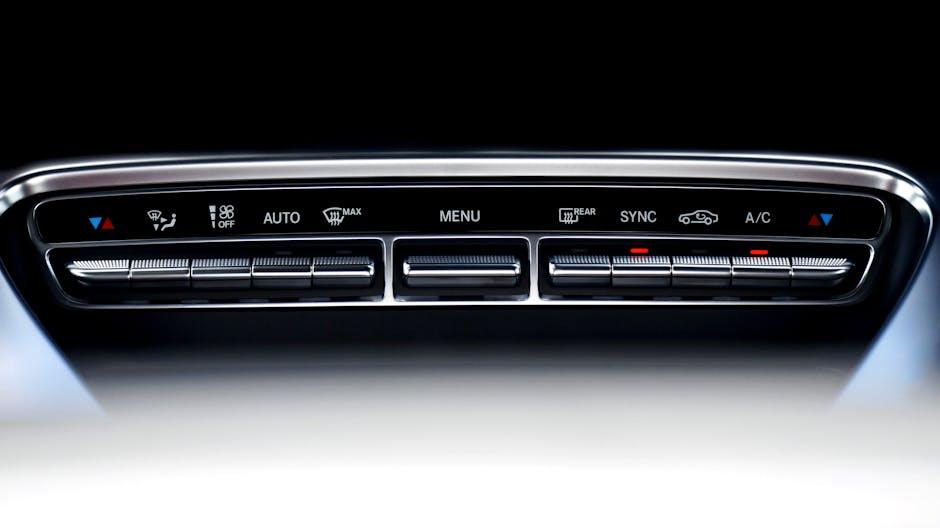Picture this: It’s a sweltering afternoon, and you step into your car only to be greeted by a faint, musty odor instead of the crisp, cool breeze you were counting on. Your car’s air conditioning system, a vital companion on hot days and dusty roads, isn’t performing quite as it should. Often overlooked, the AC filter works quietly behind the scenes, trapping dust, pollen, and other airborne irritants to keep the air inside your vehicle fresh and clean. But like any hardworking component, it doesn’t last forever. So, when exactly should you replace your car AC filter? Understanding the signs and timing can save you from discomfort, maintain your car’s air quality, and even improve system efficiency. Let’s explore the indicators and best practices for knowing the right moment to swap out that crucial filter.
Table of Contents
- Understanding the Role of Your Car AC Filter in Cabin Comfort
- Signs That Indicate It’s Time for an AC Filter Replacement
- Environmental Factors That Accelerate Filter Wear and Tear
- How to Choose the Right Replacement Filter for Your Vehicle
- Step-by-Step Guide to Replacing Your Car AC Filter
- Maximizing AC Efficiency Through Regular Filter Maintenance
- Q&A
- Wrapping Up

Understanding the Role of Your Car AC Filter in Cabin Comfort
The air conditioning filter in your car plays a crucial role in maintaining a fresh and healthy environment inside the cabin. Acting as a barrier, it traps dust, pollen, smoke, and other airborne particles before they can enter the vehicle’s interior. Without a properly functioning filter, your car’s HVAC system may circulate allergens and contaminants, leading to discomfort, especially for those with allergies or respiratory conditions. Additionally, a clogged AC filter can restrict airflow, reducing the efficiency of your air conditioner and forcing it to work harder, which can increase fuel consumption and wear on the system.
Recognizing the signs of a dirty or failing filter can help you preserve both comfort and mechanical health. Some common indicators include:
- Unpleasant odors circulating through the vents
- Reduced airflow from the AC system
- Increased dust buildup on the dashboard and interior surfaces
- Foggy windows that stubbornly stick even after defrosting
Regular maintenance and timely replacement of your car AC filter ensure that the air inside your car remains crisp and clean, while keeping your climate control system in top shape.

Signs That Indicate It’s Time for an AC Filter Replacement
When your car’s AC filter starts to lose its efficiency, you may notice certain subtle or obvious changes in how your cooling system operates. A must-check indication is a reduced airflow despite setting your AC to high. This happens as clogged filters restrict the air circulation, forcing the system to work harder and often noisier. Additionally, if you detect a musty or unpleasant smell whenever the air conditioning is on, it’s a clear signal that the filter is harboring bacteria and mold, necessitating a replacement. Don’t overlook frequent sneezing or allergic reactions during drives, as these could be triggered by pollutants passing through a compromised filter.
Keep an eye on these common signs that your car’s AC filter may be overdue for a change:
- Visible dirt or discoloration: Darkened or dusty filters are less effective and need replacement.
- Increased humidity inside the vehicle: A failing filter can affect moisture control, leaving windows foggy.
- Unusual noises: Hissing or whistling sounds when the AC runs could mean air is struggling to pass through.
- Reduced fuel efficiency: A blocked filter can cause the system to consume more energy, impacting overall fuel consumption.
| Symptom | What It Indicates |
|---|---|
| Weak airflow | Dirty or clogged filter |
| Musty odor | Dirty filter with mold buildup |
| Frequent allergies | Filter no longer trapping pollutants |
| Foggy windows | Poor moisture control due to filter |

Environmental Factors That Accelerate Filter Wear and Tear
Various external conditions can significantly reduce the lifespan of your car’s AC filter. Dusty and polluted environments, such as urban areas thick with smog or rural regions with dirt roads, introduce a heavy load of particulates that clog filters faster than usual. Similarly, areas with high pollen counts during spring or fall can overwhelm filters, requiring more frequent replacements to maintain optimal air quality inside the vehicle. Humidity also plays a hidden role—excess moisture promotes mold and mildew growth within the filter, causing unpleasant odors and potential health risks.
Beyond natural elements, some factors unique to your driving habits and local climate exacerbate filter wear. Frequent stop-and-go traffic traps more airborne debris inside the cabin, while consistently running the AC at high capacity strains the filter’s efficiency. Coastal regions with salty air can corrode filter materials, reducing their effectiveness prematurely. The table below summarizes key environmental influences and their impact level:
| Environmental Factor | Impact on Filter | Recommended Replacement Frequency |
|---|---|---|
| Dust & Pollution | High Clogging | Every 6,000 miles |
| Pollen | Allergen Buildup | Every 5,000 miles |
| Humidity | Mold & Mildew Growth | Every 7,000 miles |
| Salt Air (Coastal) | Material Corrosion | Every 5,000 miles |

How to Choose the Right Replacement Filter for Your Vehicle
Selecting the ideal replacement filter for your vehicle goes beyond just matching the part number. Pay attention to the specifications recommended by your car’s manufacturer, which often include size, filtration efficiency, and material type. Opting for OEM (Original Equipment Manufacturer) filters ensures compatibility and performance, but quality aftermarket options can also provide excellent protection if carefully chosen. Keep an eye out for filters with advanced features such as anti-bacterial coatings or enhanced dust-trapping capabilities, especially if you frequently drive in urban or dusty environments.
Before making a purchase, consider these elements to guarantee your vehicle breathes clean air:
- Filter Type: Look at cabin air filters, pollen filters, or activated carbon varieties depending on your needs.
- Performance Ratings: Check for MERV or HEPA ratings to understand filtration quality.
- Compatibility: Double-check vehicle model years and trims to avoid sizing issues.
- Customer Reviews: Insights from other drivers can highlight real-world effectiveness and longevity.
| Filter Type | Best For | Unique Benefit |
|---|---|---|
| Standard Cabin Filter | General use | Basic dust filtration |
| Activated Carbon Filter | Urban areas | Odor and gas absorption |
| HEPA Filter | Allergy sufferers | Captures fine particles and allergens |

Step-by-Step Guide to Replacing Your Car AC Filter
Replacing your car AC filter is a straightforward task that can significantly improve your driving comfort and air quality. Start by locating the filter, which is usually behind the glove compartment or under the dashboard. Before removal, make sure your car is turned off and the HVAC system is not running. Gently open the compartment, remove the old filter, and take a moment to inspect it for dirt, leaves, or debris. If the filter appears clogged or darkened, it’s time to replace it with a new one. When installing, ensure the filter is oriented correctly according to airflow indicators, and secure the compartment back in place.
To keep track of maintenance, consider these helpful pointers:
- Frequency: Generally, replace the filter every 12,000 to 15,000 miles or once a year.
- Environment: Replace sooner if you drive in dusty or urban areas.
- Seasonal Changes: Change the filter before summer for optimal cooling efficiency.
| Driving Conditions | Recommended Replacement Interval |
|---|---|
| Normal Urban | Every 12,000 – 15,000 miles |
| Dusty/Rural Roads | Every 6,000 – 10,000 miles |
| Heavy Traffic/High Pollution | Every 8,000 – 12,000 miles |

Maximizing AC Efficiency Through Regular Filter Maintenance
Keeping your car’s AC filter in prime condition is the secret weapon to boost cooling efficiency and maintain fresh air circulation inside your vehicle. Over time, dust, pollen, and debris clog the filter, forcing the AC system to work harder to push air through. This not only strains your compressor but also reduces airflow, making your cabin less comfortable and increasing fuel consumption. A clean filter allows the AC to deliver crisp, cool air quickly, ensuring optimal performance on every drive.
Here are some key signs that indicate it’s time to give your AC filter a refresh:
- Reduced airflow or weak cooling
- Unpleasant odors circulating in the cabin
- Visible dirt or discoloration on the filter surface
- AC system running longer than usual to reach desired temperature
| Driving Conditions | Recommended Filter Replacement Interval |
|---|---|
| Normal City Driving | 12,000 – 15,000 miles |
| Dusty or Off-Road Conditions | 6,000 – 10,000 miles |
| Heavy Traffic/Stop-and-Go | 10,000 – 12,000 miles |
Q&A
Q&A: When to Replace Your Car AC Filter
Q: What exactly is a car AC filter, and why does it matter?
A: Your car’s AC filter, often called a cabin air filter, cleans the air that flows into your vehicle’s interior through the air conditioning system. It traps dust, pollen, mold spores, and other particles, ensuring you breathe fresh air while driving. A clean filter helps maintain good air quality and keeps the AC system running efficiently.
Q: How do I know when it’s time to replace the AC filter?
A: Common signs include reduced airflow from the vents, unpleasant odors inside the cabin, increased dust settling on your dashboard, or noticing allergy symptoms worsening when you drive. If you haven’t changed the filter in over 12,000 to 15,000 miles (or about once a year), it’s probably time for a swap.
Q: Can I just wait until I notice a problem before changing the filter?
A: Waiting can cause the filter to become clogged, which forces the AC system to work harder, possibly leading to higher energy consumption and strain on the blower motor. It’s best to replace the filter proactively to avoid costly repairs and maintain comfort.
Q: Does driving environment affect how often I should replace my AC filter?
A: Absolutely! If you often drive in dusty or urban areas with heavy pollution, or if you regularly travel on dirt roads, your filter will clog faster. In these cases, consider replacing the AC filter every 6,000 to 10,000 miles or even more frequently.
Q: Can I replace the car AC filter myself, or do I need a mechanic?
A: Many car AC filters are designed for easy access and can be replaced with minimal tools and effort—often found behind the glove compartment or under the dashboard. However, consulting your owner’s manual or a professional is wise if you’re unsure.
Q: What might happen if I ignore a dirty AC filter?
A: Beyond reduced air quality and less effective cooling, a neglected filter can lead to unpleasant smells due to mold and bacteria buildup, and increase the risk of damage to your AC system components over time.
Q: Are all filters the same, or should I look for something specific?
A: Filters vary by type and quality. Basic filters trap larger particles, while premium options use activated carbon to absorb odors and harmful gases. Selecting a high-quality filter tailored to your needs can enhance air quality and system longevity.
Q: How does replacing the AC filter affect overall vehicle performance?
A: While it won’t boost engine horsepower, maintaining a clean AC filter improves your HVAC system’s efficiency, increases airflow, and ensures a comfortable cabin environment — key for a pleasant driving experience.
In essence, the car AC filter is a small component with a big role in keeping your drive comfortable and your air clean. Regular replacement isn’t just a maintenance task—it’s a breath of fresh air you deserve on every journey.
Wrapping Up
Knowing when to replace your car AC filter is a small but crucial step in maintaining a comfortable and healthy driving environment. By staying attentive to its condition, you ensure fresh air flows freely, protect your vehicle’s system, and enhance every journey, whether it’s a quick errand or a long road trip. Keep an eye on your filter, and your car will thank you with cool, clean air season after season.

